Abstract
An immune adherence receptor exists on the surface of primate erythrocytes, and has been characterized as a receptor for the activated third component of complement (C3b). We have applied human red blood cells (RBCs, blood group O) to a sensitive determination of complement-fixing, soluble immune complexes in serum. The method involved the binding of immune complexes with RBCs in the presence of complement and the detection of cell-bound IgG molecules by radiolabelled anti-human IgG antibodies. Since the binding of RBCs with monomeric IgG was minimal, cell-bound IgG molecules were taken as representing immune complexes. When aggregated human gammaglobulin (AHG) was used as a model of immune complexes, as little as 5 μg dissolved in 1 ml of normal human serum were detected. The binding of RBCs with AHG was inhibited in EDTA solution where the classical complement pathway could not be activated. The RBC radioimmune assay was successfully applied to the determination of soluble immune complexes in pathological serum samples obtained from the patients with systemic lupus erythematosus and those with fulminant Type B hepatitis. False-positive results by autoantibodies against RBCs could be excluded by performing a Coombs test and by comparing the binding in the presence of complement with that in EDTA solution. The ubiquitous availability of RBCs coupled with a high sensitivity would allow the RBC radioimmune assay to be added to the battery of previous methods to determine immune complexes in the serum.
Full text
PDF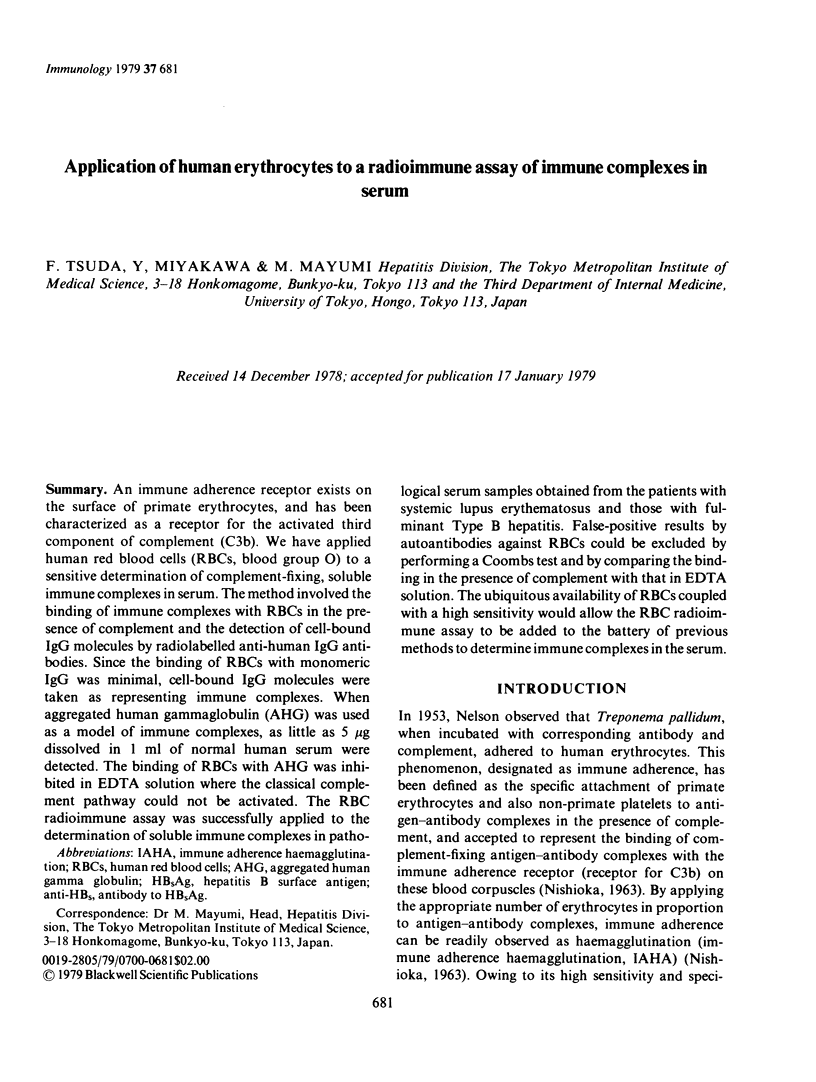
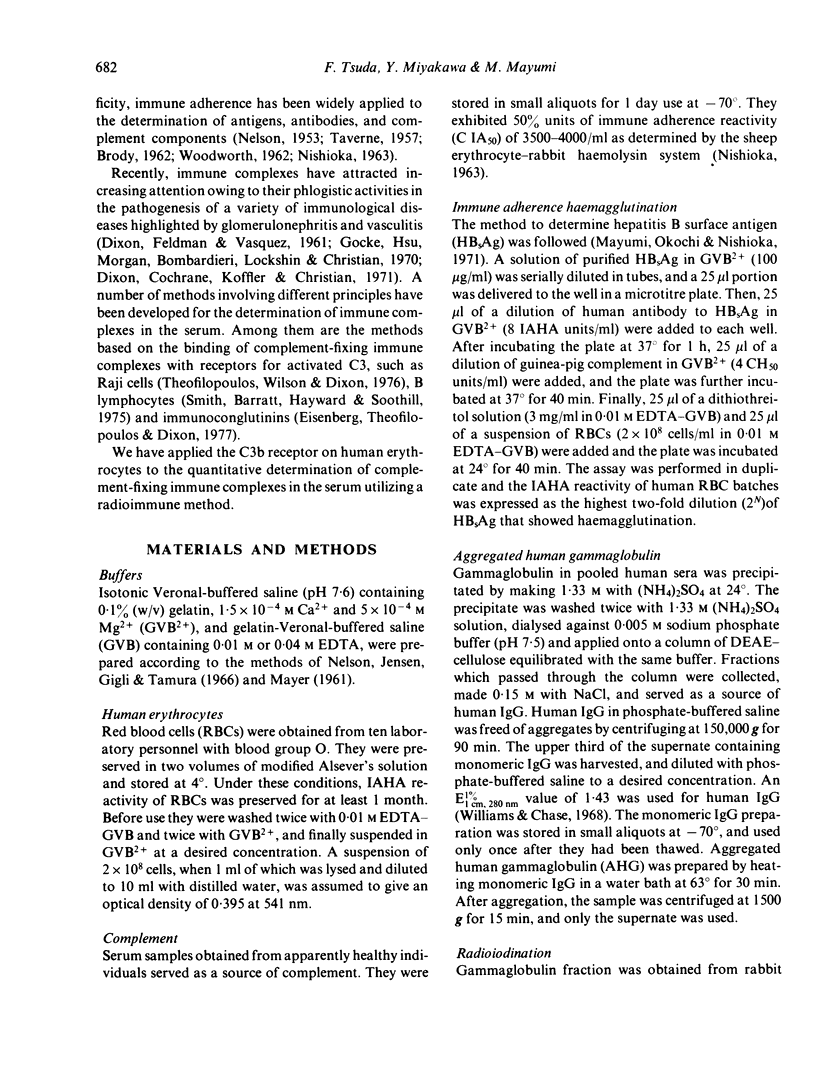
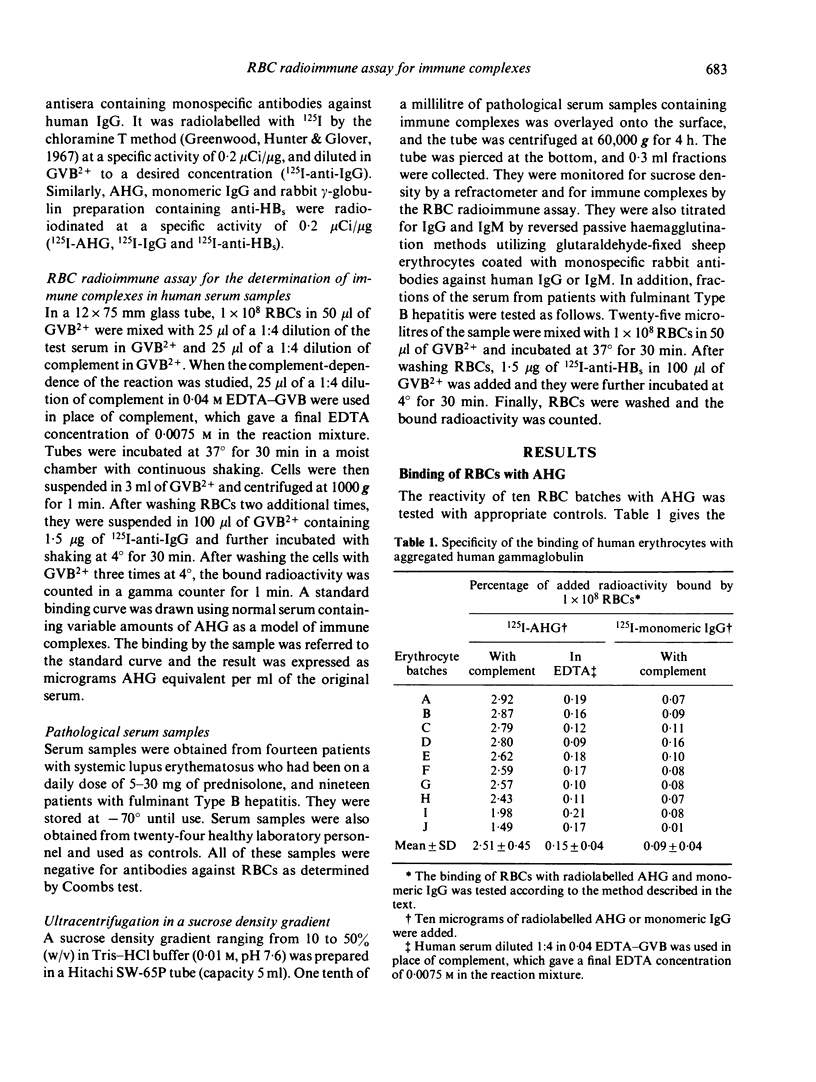
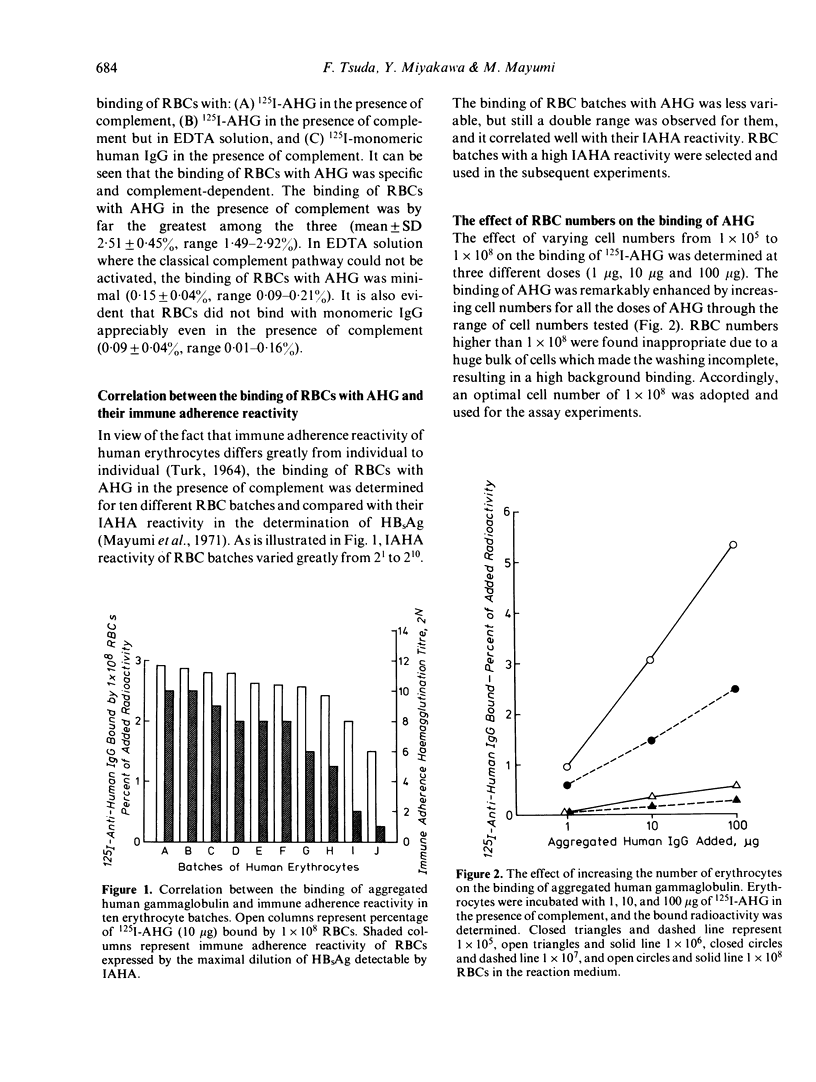
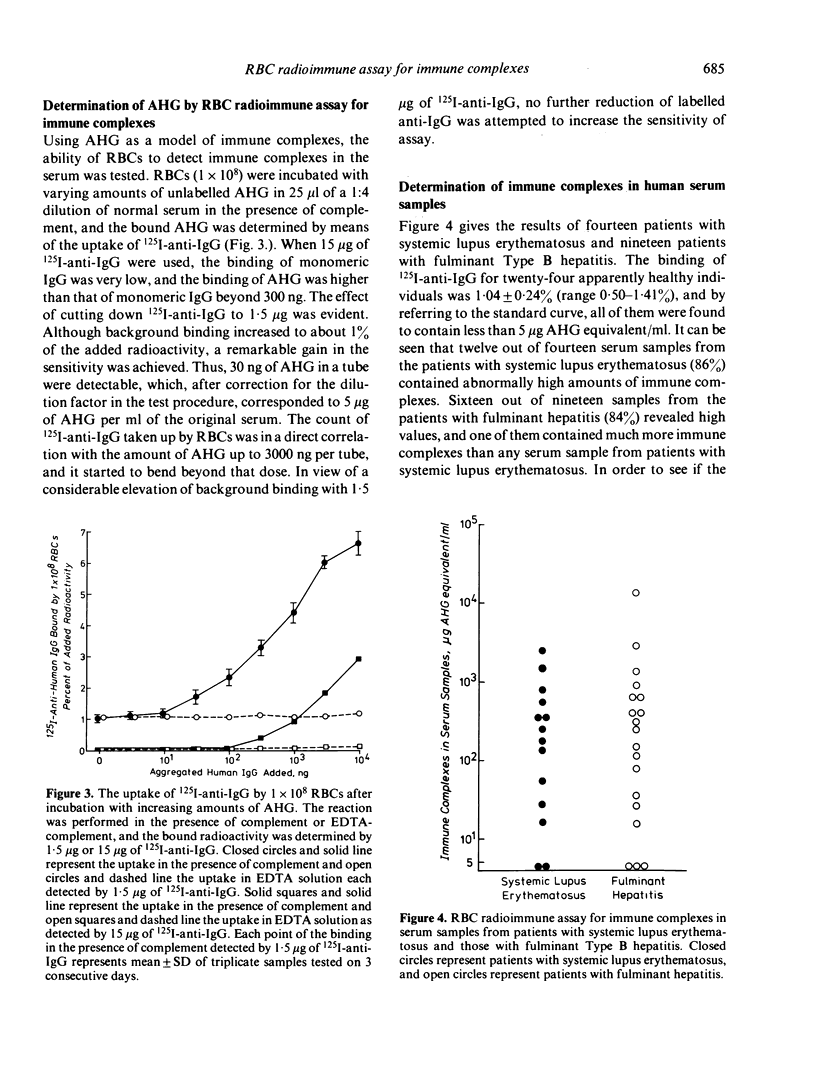
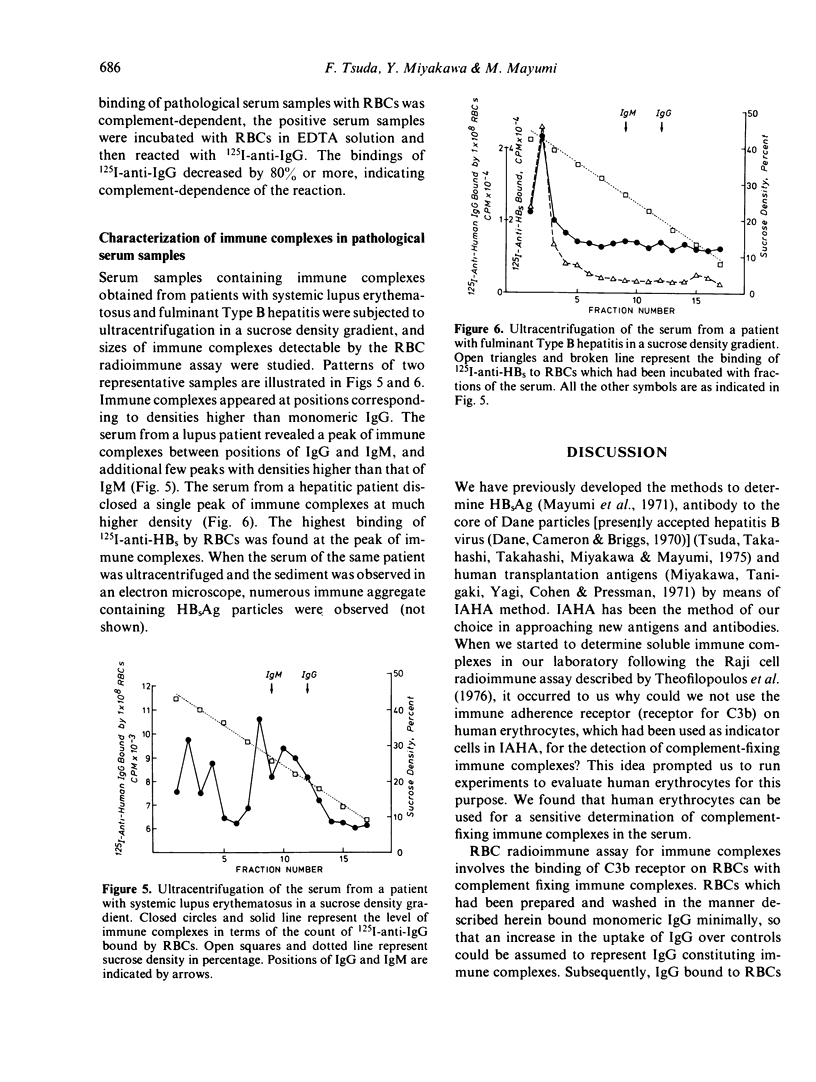
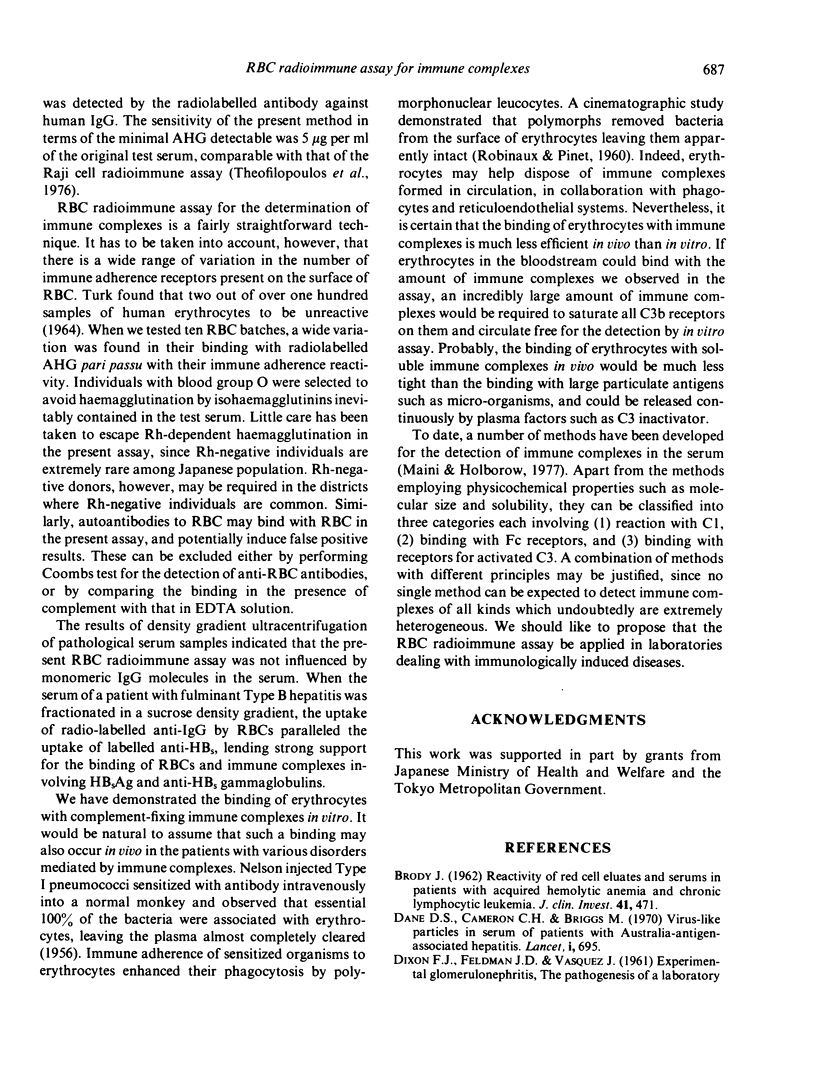
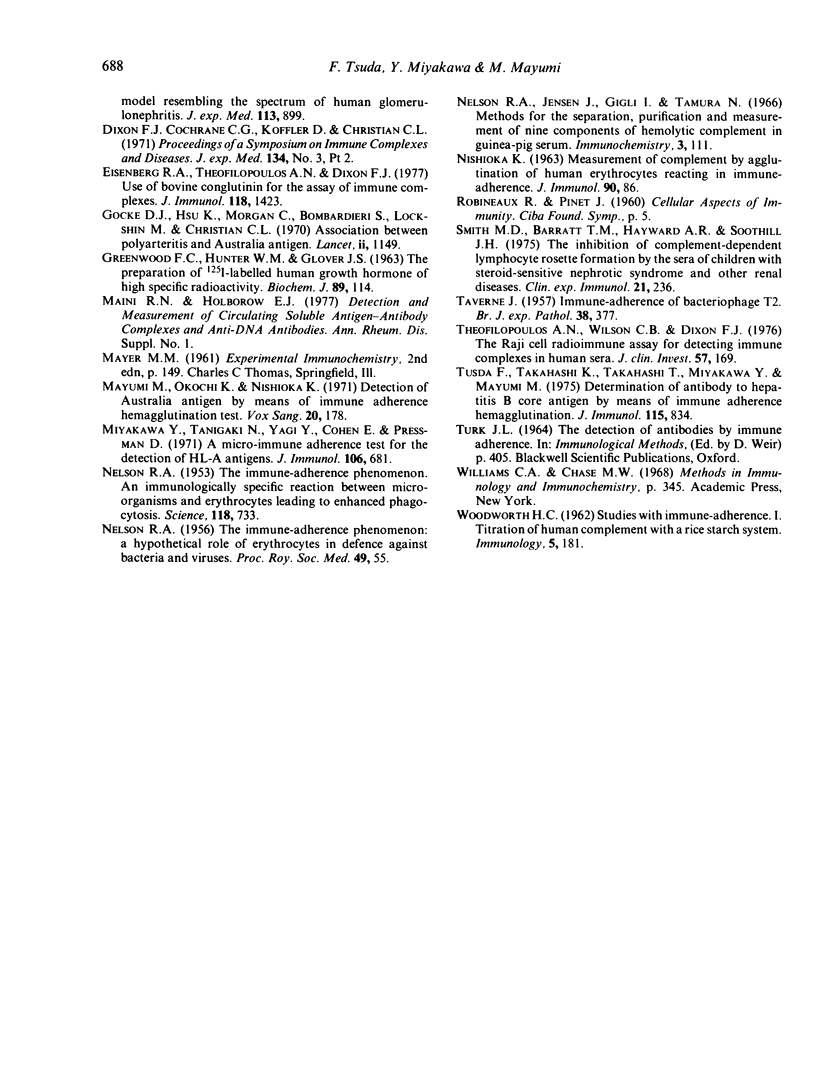
Selected References
These references are in PubMed. This may not be the complete list of references from this article.
- BRODY J. Reactivity of red cell eluates and serums in patients with acquired hemolytic anemia and chronic lymphocytic leukemia. J Clin Invest. 1962 Mar;41:471–479. doi: 10.1172/JCI104500. [DOI] [PMC free article] [PubMed] [Google Scholar]
- DIXON F. J., FELDMAN J. D., VAZQUEZ J. J. Experimental glomerulonephritis. The pathogenesis of a laboratory model resembling the spectrum of human glomerulonephritis. J Exp Med. 1961 May 1;113:899–920. doi: 10.1084/jem.113.5.899. [DOI] [PMC free article] [PubMed] [Google Scholar]
- Dane D. S., Cameron C. H., Briggs M. Virus-like particles in serum of patients with Australia-antigen-associated hepatitis. Lancet. 1970 Apr 4;1(7649):695–698. doi: 10.1016/s0140-6736(70)90926-8. [DOI] [PubMed] [Google Scholar]
- GREENWOOD F. C., HUNTER W. M., GLOVER J. S. THE PREPARATION OF I-131-LABELLED HUMAN GROWTH HORMONE OF HIGH SPECIFIC RADIOACTIVITY. Biochem J. 1963 Oct;89:114–123. doi: 10.1042/bj0890114. [DOI] [PMC free article] [PubMed] [Google Scholar]
- Gocke D. J., Hsu K., Morgan C., Bombardieri S., Lockshin M., Christian C. L. Association between polyarteritis and Australia antigen. Lancet. 1970 Dec 5;2(7684):1149–1153. doi: 10.1016/s0140-6736(70)90339-9. [DOI] [PubMed] [Google Scholar]
- Mayumi M., Okochi K., Nishioka K. Detection of Australia antigen by means of immune adherence haemagglutination test. Vox Sang. 1971 Feb;20(2):178–181. doi: 10.1111/j.1423-0410.1971.tb00549.x. [DOI] [PubMed] [Google Scholar]
- Miyakawa Y., Tanigaki N., Yagi Y., Cohen E., Prssman D. A micro-immune adherence test for the detction of HL-A antigens. J Immunol. 1971 Mar;106(3):681–688. [PubMed] [Google Scholar]
- NELSON R. A., Jr The immune-adherence phenomenon; a hypothetical role of erythrocytes in defence against bacteria and viruses. Proc R Soc Med. 1956 Jan;49(1):55–58. [PMC free article] [PubMed] [Google Scholar]
- NELSON R. A., Jr The immune-adherence phenomenon; an immunologically specific reaction between microorganisms and erythrocytes leading to enhanced phagocytosis. Science. 1953 Dec 18;118(3077):733–737. doi: 10.1126/science.118.3077.733. [DOI] [PubMed] [Google Scholar]
- NISHIOKA K. Measurements of complement by agglutination of human erythrocytes reacting in immune-adherence. J Immunol. 1963 Jan;90:86–97. [PubMed] [Google Scholar]
- Nelson R. A., Jr, Jensen J., Gigli I., Tamura N. Methods for the separation, purification and measurement of nine components of hemolytic complement in guinea-pig serum. Immunochemistry. 1966 Mar;3(2):111–135. doi: 10.1016/0019-2791(66)90292-8. [DOI] [PubMed] [Google Scholar]
- Smith M. D., Barratt T. M., Hayward A. R., Soothill J. F. The inhibition of complement-dependent lymphocyte rosette formation by the sera of children with steroid-sensitive hephrotic syndrome and other renal diseases. Clin Exp Immunol. 1975 Aug;21(2):236–243. [PMC free article] [PubMed] [Google Scholar]
- TAVERNE J. Immune-adherence of bacteriophage T2. Br J Exp Pathol. 1957 Aug;38(4):377–384. [PMC free article] [PubMed] [Google Scholar]
- Theofilopoulos A. N., Wilson C. B., Dixon F. J. The Raji cell radioimmune assay for detecting immune complexes in human sera. J Clin Invest. 1976 Jan;57(1):169–182. doi: 10.1172/JCI108257. [DOI] [PMC free article] [PubMed] [Google Scholar]
- Tsuda F., Takahashi T., Takahashi K., Miyakawa Y., Mayumi M. Determination of antibody to hepatitis B core antigen by means of immune adherence hemagglutination. J Immunol. 1975 Sep;115(3):834–838. [PubMed] [Google Scholar]
- WOODWORTH H. C. Studies with immune-adherence. I. Titration of human complement with a rice starch system. Immunology. 1962 Jan;5:181–186. [PMC free article] [PubMed] [Google Scholar]


